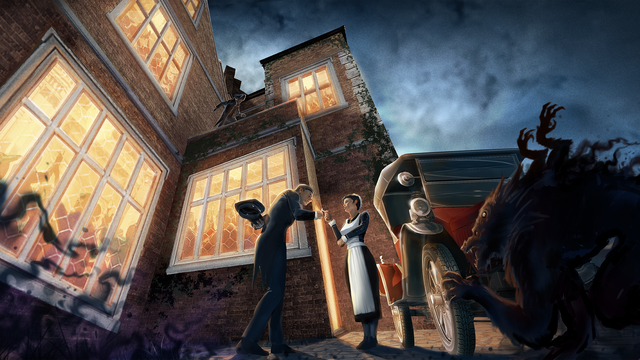
Trust is a big deal, especially in Middle-earth. That’s the key takeaway directors Louise Hooper and Sanaa Hamri and writer Glenise Mullins are keen to impart with The Lord of the Rings: The Rings of Power’s latest episode. It’s a simple yet effective throughline that yields the second season’s most focused (and satisfying) entry yet. And yet episode 4’s emphasis on trust also underscores where it’s missing — not just between our heroes, but between the show and its audience.
[Ed note: This article contains spoilers for The Lord of the Rings: The Rings of Power season 2, episode 4.]
With season 2’s setup now largely out of the way, episode 4 is mercifully free from the obligation to check in with every member of The Rings of Power’s sprawling cast. Instead, the fourth episode zeroes in on just three narrative threads, all of which revolve around how much (or how little) faith everyone has in the people around them. Elrond and the newly demoted Galadriel embody this best; their Barrow-downs excursion is undermined by mistrust before it even begins. She’s bought into her ring’s prophetic powers; he’s not a fan. Meanwhile, over in Pelargir, Isildur and Arondir aren’t exactly sold on Estrid just yet. Things aren’t much better in Rhûn, either. The Stranger is banking on divine forces nudging him where he needs to be — which is apparently Tom Bombadil’s holiday house — while the stoors don’t exactly roll the welcome mat for outsiders Nori and Poppy.
But as is so often the case with the Prime Video series, the effectiveness of each storyline varies considerably. The Galadriel/Elrond material is easily the strongest. Purists will continue to wince at The Rings of Power’s depiction of Galadriel’s ring versus J.R.R. Tolkien’s original canon, but the drama this deviation yields keeps paying off. Not only does it give Robert Aramayo and Morfydd Clark room to show off their respective acting chops, but the friction between their characters feels authentic within the context of the show. Clark’s Galadriel is impulsive and guided by her gut, whereas Aramayo’s Elrond is a decidedly more cautious customer. Of course they’re going to take diametrically opposed positions on something as world-saving — or -ending — as a Ring of Power. It’s a debate with two equally valid sides that reinforces the overall moral murkiness that (rightly or wrongly) Rings of Power brings to The Lord of the Rings.
Unfortunately, everything that goes down in Pelargir feels a bit bland by comparison. When we caught a glimpse of Estrid’s brand last episode, the implication was that she was on a sneaky spy mission for Adar. Yet there was also the very real possibility that the Rings of Power showrunners were setting us up for a disappointing bait and switch with Estrid — and, frustratingly, that’s exactly what happens. At its core, the Pelargir subplot boils down to Isildur trusting Estrid and his faith — if not his obvious eagerness to be more than “just friends” — ultimately being rewarded. It lacks the layered emotional dissonance of Galadriel and Elrond’s interplay, and if this is the extent of the “Is Estrid a Mordor mole?” arc, it would’ve been best skipped over all together.

Then there’s the Rhûn piece of the puzzle. It’s no secret that this subplot isn’t doing much for me this season, and episode 4 hasn’t changed my mind. Events in the eastern corner of Middle-earth are still siloed off from the wider story and moving at a meandering pace, with only a vague sense of their greater significance (the Stranger will join the fight against Sauron… someday?). It’s reached the point where believing showrunners J.D. Payne and Patrick McKay have a plan to tie the Stranger’s journey in with everything else in The Rings of Power is a trust exercise in its own right. And that ain’t easy when they serve up stuff like the Poppy/Merimac romance that feels like filler, and — with its hefty helping of grating harfoot and stoor dialogue — not particularly worthwhile filler at that.
That said filler seems geared mostly toward squeezing in as many shoutouts to Lord of the Rings lore as possible is representative of episode 4’s bigger problem: trusting its audience. There’s a distinct lack of faith in viewers’ capacity to engage with a Lord of the Rings outing that’s not steeped in fan service on display here. Admittedly, there’s little sense in playing in Tolkien’s Middle-earth sandbox and not using at least some of the toys. What’s more, to some extent, it’s unavoidable. After all, The Rings of Power is a Lord of the Rings prequel; you’d expect to see some characters and concepts from the latter show up in the former. But as with Peter Jackson’s Hobbit trilogy, there are times where these Rick Dalton click-and-point moments feel like a natural extension of the story, and times where they feel forced.
Tom Bombadil is a prime example of the “forced” category. Rory Kinnear is an inspired bit of casting and his performance is dependably solid, but there’s no getting around it: Tolkien describes a whimsical, enigmatic forest guardian utterly oblivious to the big picture. But in episode 4, Tom is a generic sage mentor, someone clued in on Middle-earth affairs and actively interested in the inevitable showdown with Sauron — so basically the exact opposite of what Tolkien had in mind. Which begs the question: Why use him at all? If the Stranger must have a mystical life coach, why not run with another istar? The Blue Wizards are (probably) on the scene — and in Rhûn, no less! — at this point in the Middle-earth timeline. Maybe because the live-action debut of Tom Bombadil is more likely to tempt fans to tune in than yet another beardy old guy with a stick?

Episode 4’s ents are much the same. Sure, it’s neat to see one of the long-lost entwives, but that novelty also seems to be the only reason they’re involved in proceedings. And so it’s inevitable that their inclusion here feels contrived, not to mention alien to their established characterization. Like guidance counselor Tom Bombadil, it’s crowbarring a beloved element of the IP into the story to score cheap clout with viewers, rather than backing them to buy into more than just superficial lore drops.
But like I said earlier, this doesn’t apply to all of episode 4’s canon callbacks. Some of them actually build on Tolkien’s legendarium (rather than simply hand-waving in its direction) — or, failing that, weave it into the story in a way that feels organic and purposeful, not exploitative. Take the barrow-wight fight. This isn’t solely motivated by the gimmick of as-yet-unused undead baddies; it’s an atmospheric set-piece that injects some action into proceedings right when it’s needed. The same goes for the swamp monster that attacks the Pelargir crew. More than just a nod to Tolkien’s “nameless creatures,” the beastie’s arrival gives Estrid the opportunity to get back in Isildur and Arondir’s good books in suitably dramatic fashion. It has a purpose in the story beyond catering to the deep-cut crowd.
So, on balance, The Rings of Power season 2 gets away with its fan service-heavy approach this week. Does episode 4 move the needle much, in terms of the show’s main narrative? Not really. But then, that’s not the only metric of a successful episode; characters and relationships need cultivating, not just plot. Besides, the Galadriel/Adar meeting of the minds supplies adequate signposting for the second season’s remaining installments. As it stands, all roads (except those that run through Rhûn, natch) seemingly lead to season 2’s much-hyped three-episode-long Siege of Eregion. Here’s hoping all The Rings of Power’s trust issues are well and truly ironed out before we get there.
Source:https://www.polygon.com/lotr-rings-of-power/447801/trop-episode-4-review-bombadil-tolkien-lore







